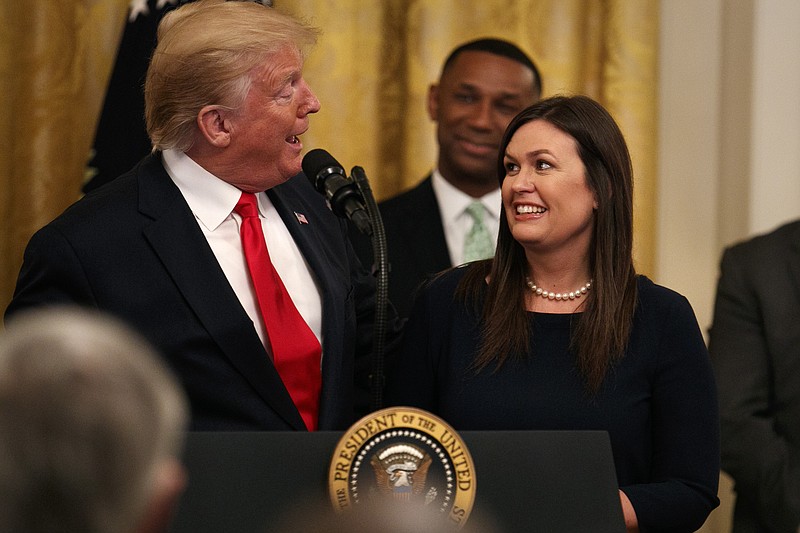The most recent White House daily press briefing was March 11. No date has been set for the next one.
We sympathize completely with President Donald Trump, who said earlier this year in a tweet that the media treated former press secretary Sarah Sanders "so rudely & inaccurately."
Indeed, no president in the 50 years of daily press briefings has been treated worse than the current White House occupant.
But that doesn't mean the daily drudgery of facing the media is something any administration ought to avoid.
President Richard Nixon, of all people, removed the White House's indoor swimming pool in 1969 and turned it into the briefing room. By the time he resigned more than five years later, he probably regretted it.
Since then, press secretaries have had to answer for Gerald Ford's WIN (Whip Inflation Now) buttons, Jimmy Carter's stagflation, Ronald Reagan's "voodoo economics," George H.W. Bush breaking his "no new taxes" pledge, Bill Clinton's intern problem, George W. Bush's war plans and Barack Obama's executive decisions.
Trump, for better and for worse, should return to allowing someone to speak for his administration.
Some argue that he communicates with the American people every day through his tweets, but that is one-sided communication. It doesn't tell us why a decision was made or allow for questions to be asked.
And, frankly, we're all curious. We all want to know what someone is thinking when they take action. We want to know why they chose this and not that. We want to know what influenced them.
That's what the daily press briefings allowed - a president, through the filter of a press secretary, to answer those questions.
It's true that Trump came into the White House as a different animal. As a businessman, he pretty much called his shots with a New York media anxious to cover him. He had friends in the business and was pals with influential people on both sides of the political aisle. He was eccentric, but he was good copy.
Once he declared his candidacy for president, things changed, though gradually. At first, the media was glad to give him exposure because they knew him and they could count on him to say something newsworthy. But when he gained more and more backing for the Republican nomination, they were sickened because they knew he was not one of them, not a liberal brethren. And they turned on him.
But Trump was no milquetoast Republican, willing to take all the criticism the media and Democratic opponents could hurl without responding. He called them out, exposed their bias and reaped the adoration of GOP voters, who had longed for a candidate with a spine.
Still, since he wasn't going anywhere, it wouldn't matter after Nov. 8, 2016.
And then it did.
So the relationship of a President Trump and the media was never going to be civil or even fair. But that doesn't mean it should be nonexistent for those who cover the White House on a daily basis.
After all, a daily briefing allows the White House to expound on what's important to the administration as well as to hear what the media believe is critical. We believe answering daily questions sharpens the rhetorical ability of the press secretary, exposes thinking that the administration may not have considered and even allows voters to judge whether or not the coverage of the president is fair.
It's simply a way of being transparent, even if members of the national media still try to cover their biases.
Could the daily press briefings return in a less partisan format?
Former George W. Bush press secretary Ari Fleischer told the Washington Examiner one way is to take away the television cameras, moving them "from a TV show to a real briefing."
A competition of who can ask the most cogent question instead of who can jockey for face time in order to ask the question that might most embarrass the president and the press secretary would be preferable.
Mike McCurry, who was press secretary under Bill Clinton, opened the briefings for television in 1995.
Now he wished he hadn't, but he doesn't believe presidential tweets are enough of an antidote.
Neither is the milieu Raj Shah, who was White House deputy press secretary until earlier this year, recently described to the annual meeting of the American Political Science Association.
"It's an incredibly combative environment," he said. "When I was in the White House, it was nonstop hostility."
A White House daily press briefing ought to be somewhere between one man's tweets and a "combative environment." The Trump administration should work out some new ground rules with media representatives who understand the need to eliminate the bias but not the tough questions, and then resume the briefings.
It's a daily exercise that can enlighten the president, the media and the people.
